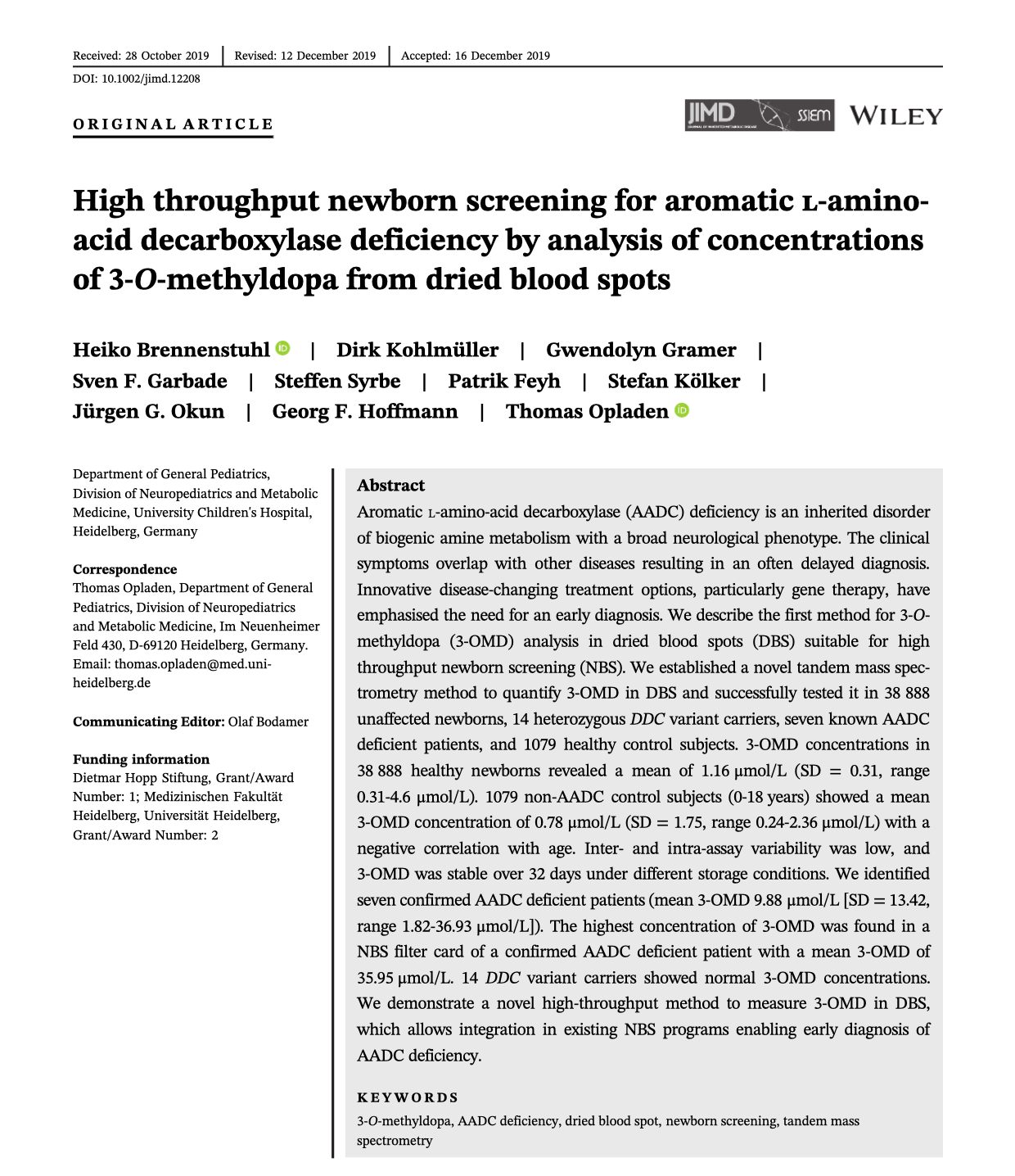High Throughput Newborn Screening for Aromatic ʟ-amino-acid Decarboxylase Deficiency by Analysis of Concentrations of 3-O-methyldopa From Dried Blood Spots
Aromatic l ‐amino‐acid decarboxylase (AADC) deficiency is an inherited disorder of biogenic amine metabolism with a broad neurological phenotype. The clinical symptoms overlap with other diseases resulting in an often delayed diagnosis. Innovative disease‐changing treatment options, particularly gene therapy, have emphasised the need for an early diagnosis. We describe the first method for 3‐O ‐methyldopa (3‐OMD) analysis in dried blood spots (DBS) suitable for high throughput newborn screening (NBS). We established a novel tandem mass spectrometry method to quantify 3‐OMD in DBS and successfully tested it in 38 888 unaffected newborns, 14 heterozygous DDC variant carriers, seven known AADC deficient patients, and 1079 healthy control subjects. 3‐OMD concentrations in 38 888 healthy newborns revealed a mean of 1.16 μmol/L (SD = 0.31, range 0.31‐4.6 μmol/L). 1079 non‐AADC control subjects (0‐18 years) showed a mean 3‐OMD concentration of 0.78 μmol/L (SD = 1.75, range 0.24‐2.36 μmol/L) with a negative correlation with age. Inter‐ and intra‐assay variability was low, and 3‐OMD was stable over 32 days under different storage conditions. We identified seven confirmed AADC deficient patients (mean 3‐OMD 9.88 μmol/L [SD = 13.42, range 1.82‐36.93 μmol/L]). The highest concentration of 3‐OMD was found in a NBS filter card of a confirmed AADC deficient patient with a mean 3‐OMD of 35.95 μmol/L. 14 DDC variant carriers showed normal 3‐OMD concentrations. We demonstrate a novel high‐throughput method to measure 3‐OMD in DBS, which allows integration in existing NBS programs enabling early diagnosis of AADC deficiency.
https://onlinelibrary.wiley.com/doi/full/10.1002/jimd.12208


